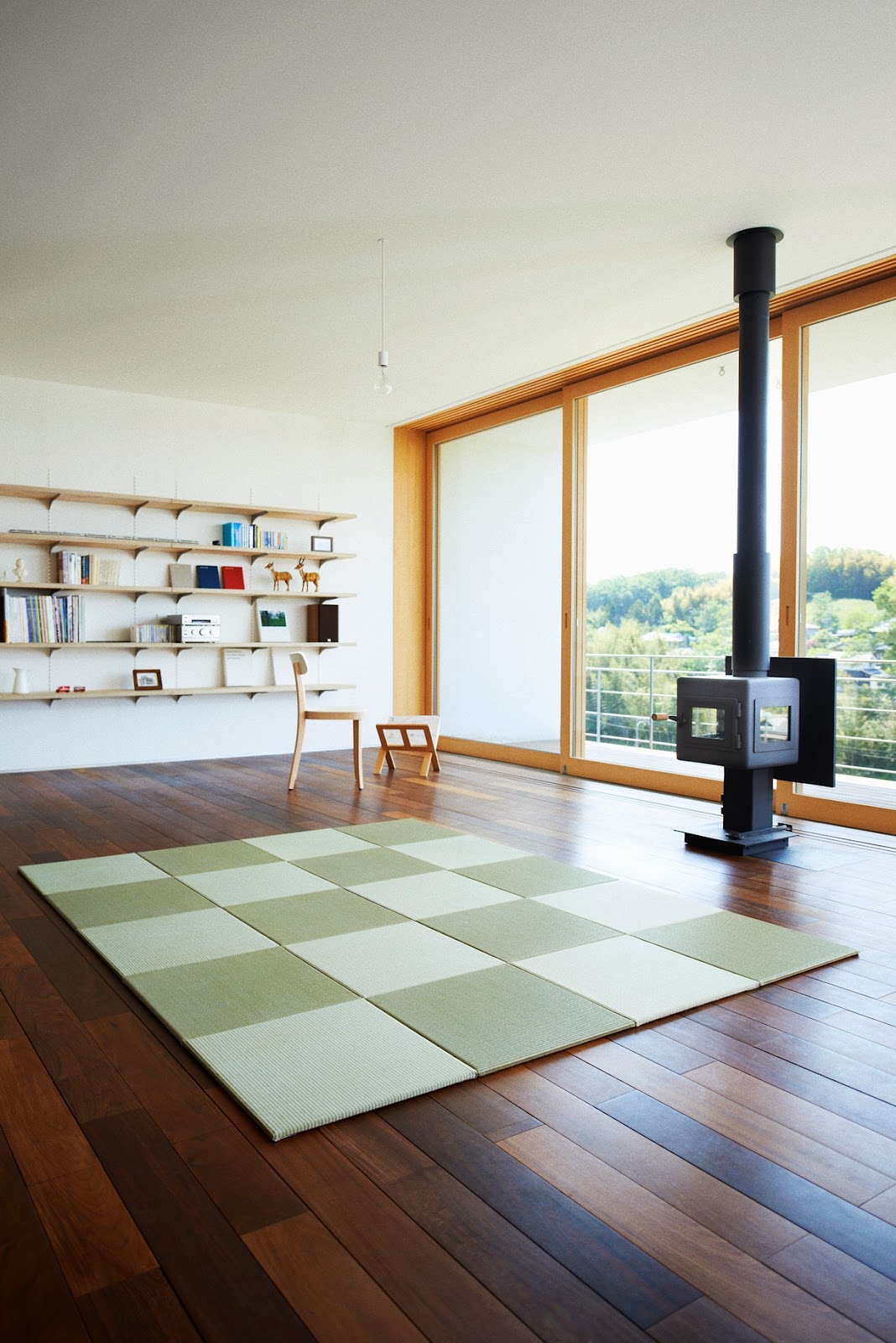This is a portable futon handmade by a company in Kyoto. This is lighter and more compact than normal futon, easy to fit in a small space and carry it around. This can be used as your siesta futon or a nice way of giving your guests a good night's sleep! Come and check the further information here!
Tuesday, February 25, 2014
Sunday, February 16, 2014
Tatami Mats
Japanese used to live with tatami mats. There is a well-used proverb, Okite Hanjou Nete Ichi-jou, which literally means that 'the space one uses is the size of half of a tatami mat when waking, and a tatami mat when sleeping'. This means that whatever wealth you have, you only need such a small space for living. Therefore, instead of demanding more, be content with what you have.
We measure the size of houses by thinking about how many tatami mats can fit in the space. The unit used, 'jou' literally means a tatami mat. An old Japanese house was just a tatami room and a small kitchen space beside or inside the room. People used that tatami room for all the purposes of life: living, dining, cooking and sleeping.
Tatami is made from igusa grass. I love them although fewer houses have a tatami room these days in Japan because of changes in lifestyle. My tiny flat in Tokyo was a tatami room. I loved living there because the tatami room made it cool in summer and warm in winter. Also, if I felt like taking a nap, I could just lie down on the floor as it was cushioned compared to normal flooring.
I can bring this comfort across the ocean and to your house! You do not need any installation and can use like a foldable rug. This will come soon but I show some of the photos before updating on the store!
Tuesday, February 11, 2014
Spring has come!!!
I have just got new prints of our Ojami zafu cushions for Spring! Get ready for the new season with our bright selection!
Monday, February 3, 2014
Dedicated craftsmanship - Magewappa, the Japanese traditional craft
My first time ever to visit Akita prefecture was to visit Shibata Yoshinobu Shouten, one of the best Magewappa making company. They had recently moved to a new building, yet they were still less than 10 people; the family plus several craftspeople.
 |
| In street of Akita; Magewappa is a speciality of Akita. |
Yoshimasa, the son of the founder and current CEO, showed me their studio. All of their Magewappa is made from natural Akita cedar that is around 200 years-old. Its tree ring is narrow, showing that unlike inferior wood, it is grown naturally, taking far more time, and thus the wood is strong. Shibata Yoshinobu Shouten treats this quality material as a precious resource, turning it into beautiful boxes to enrich people's lives. However, it is no longer possible to harvest natural Akita cedar, due to a decision of the government since last year, in order to protect this national treasure. This will be a challenge for the company and they will be making Magewappa items using their existing stock of cedar for a while.
After being cut from the forest, the cedar is preserved for about 3 years to dry. After that, the wood is put in a special room to completely dry out. It may have joints or warp, but for Magewappa only parts without these are selected and used.
After drying, the cedar is cut, planed, and soaked in hot water to be bent, using simple equipment by one craftsman. To form and fix the shape, the bent wood is left hanging in the studio for a few weeks. Boxes like Nagate require more time and proficiency for bending and drying, as they have a deeper curve. After its shape is formed, a different craftsman takes care of each of the parts: the bottom, the lid, and all the details such as scraping, curving the edge, scraping the cherry bark and lacing it etc. The machine to smooth the cherry bark was invented by Yoshinobu; prior to his invention, this was done manually.
Each of these stages is carefully done by a craftsman and all of them wear masks to protect them from dust. When I visited, I could see how absorbed they were in their work; the studio was quiet except for the occasional sound of a machine. Each item is made with unstinting dedication. Creating one object of Magewappa requires time; time for the wood to be ready and for many processes afterwards.
 |
| Cedars cut and dried for 3 years |
 |
| Cut cedar is soaked in a hot water in the back. |
 |
| Cedar is formed in a shape. |
 |
 |
| The ceiling is filled with hanging Magewappa. |
 |
| Nagate box (center) |
 |
| Making a support frame for the back of the box. |
 |
| Scraping |
 |
| Curving the edge |
 |
| Before (front) and after (back) |
 |
| Cherry bark (before) |
 |
| Cherry bark (after smoothing); it is sliced and used for the decorative attachment. |
Subscribe to:
Posts (Atom)








